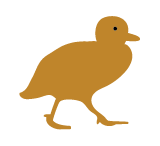This course prepares students for further study of science and engineering, and for a wide range of career opportunities in industry. The course provides a conceptual-based exposure to the fundamental principles, a comprehensive knowledge and a sound understanding of physics together with the practical, analytical and mathematical skills of a physicist. This course increases students’ understanding of the applications and uses of physics and the implications of physics for society and the environment. It addresses the fundamental concepts of waves and optics including laws of reflection and refraction, interference, diffraction, and polarization of light waves. As a course that combines classroom and laboratory sessions, it aims to provide theoretical and practical knowledge for students.
Waves and Optics will help students to master basic and advanced knowledge and skills needed for an effective transition to a Physics Major at an Australian university and is highly recommended for the students specializing in science or engineering.
Learning Outcomes
Upon successful completion, students will have the knowledge and skills to:
On satisfying the requirements of this course students will have the knowledge and skills to:1. creatively and concisely summarize, synthesize and interpret information into grammatically correct sentences through written communication;
2. apply basic knowledge of principles and theories about the behavior of light and the physical environment to conduct experiments;
3. think creatively and critically to analyze problems or situations involving the fundamental principles of physics;
4. use appropriate mathematical techniques and concepts to obtain quantitative solutions to problems;
5. collect and appropriately analyze data working independently and in collaboration with others (experimentation, data collection);
6. communicate an understanding of physics using qualitative and quantitative representations in appropriate modes and genres.
Other Information
Course Contact: Dr Rebecca CrossT: 02 61250982
E: rebecca.cross@anucollege.edu.au
Indicative Assessment
Research Essay: Week 6, 40%Exam: Week 9, 40%
Oral Presentation and Laboratory Report: Week 10, 20%
In response to COVID-19: Please note that Semester 2 Class Summary information (available under the classes tab) is as up to date as possible. Changes to Class Summaries not captured by this publication will be available to enrolled students via Wattle.
The ANU uses Turnitin to enhance student citation and referencing techniques, and to assess assignment submissions as a component of the University's approach to managing Academic Integrity. While the use of Turnitin is not mandatory, the ANU highly recommends Turnitin is used by both teaching staff and students. For additional information regarding Turnitin please visit the ANU Online website.
Workload
80 hours of total student learning time made up from:a) 40 hours of contact: 40 hours of workshop and workshop-like activities.
b) 40 hours of supported and independent student research, reading and writing.
Requisite and Incompatibility
Prescribed Texts
Raymond A. Serway and Chris Vuille, College Physics, Ninth Edition (2012), Cengage Learning AustraliaFees
Tuition fees are for the academic year indicated at the top of the page.
If you are a domestic graduate coursework or international student you will be required to pay tuition fees. Tuition fees are indexed annually. Further information for domestic and international students about tuition and other fees can be found at Fees.
- Student Contribution Band:
- 2
- Unit value:
- 6 units
If you are an undergraduate student and have been offered a Commonwealth supported place, your fees are set by the Australian Government for each course. At ANU 1 EFTSL is 48 units (normally 8 x 6-unit courses). You can find your student contribution amount for each course at Fees. Where there is a unit range displayed for this course, not all unit options below may be available.
| Units | EFTSL |
|---|---|
| 6.00 | 0.12500 |
Course fees
- Domestic fee paying students
| Year | Fee |
|---|---|
| 2020 | $3510 |
- International fee paying students
| Year | Fee |
|---|---|
| 2020 | $4998 |
Offerings, Dates and Class Summary Links
ANU utilises MyTimetable to enable students to view the timetable for their enrolled courses, browse, then self-allocate to small teaching activities / tutorials so they can better plan their time. Find out more on the Timetable webpage.


